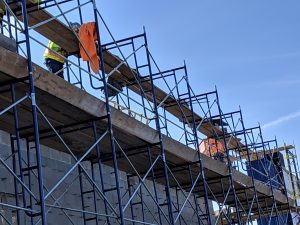How To Choose The Right Scaffolding for Your Construction needs
Having the right scaffolding is crucial when it comes to construction or any other type of project that requires working at heights. Not only does it provide a safe and stable platform for workers, but it also ensures efficiency and productivity on the job site. With various options available in the market, picking the right scaffolding for your specific needs can be a daunting task. However, by considering a few key factors, you can make an informed decision and choose the scaffolding that best suits your requirements.
1. Determine the Type of Project:
The first step in picking the right scaffolding is to determine the type of project you are working on. Whether it is a small renovation, a large construction project, or even maintenance work, each project may have different requirements. For instance, if you are working on a high-rise building, you may need a suspended scaffolding system, whereas a simple painting job might only require basic modular scaffolding.
2. Consider the Height and Weight Capacity:
The height at which you will be working and the weight capacity required are vital considerations when choosing scaffolding. Different types of scaffolding have varying height limits and weight capacities. It is crucial to check the manufacturer’s guidelines and ensure that the chosen scaffolding can safely support your intended workload.
3. Evaluate the Working Space:
The available working space and access requirements play a significant role in selecting the right scaffolding. If you have limited space, you might need compact scaffolding or one that can be adjusted to fit into tight areas. On the other hand, if you have a sizable project with ample space, a traditional frame scaffold might be the most suitable option.
4. Check Safety Features:
When working at heights, safety should be a top priority. Therefore, selecting scaffolding that meets all the necessary safety standards is essential. Look for features such as guardrails, toe boards, and non-slip surfaces to ensure a secure working environment. Additionally, inspect the scaffolding regularly and ensure that it is properly maintained throughout your project’s duration.
5. Evaluate Mobility Requirements:
Consider whether you will need to move the scaffolding frequently or if it will remain stationary for most of the project. If mobility is crucial, look for scaffolding with wheels or casters, making it easy to move around as needed. Alternatively, choose scaffolding designed for stationary work if you require stability and a fixed position.
6. Assess Durability and Longevity:
Investing in durable and long-lasting scaffolding is essential for both your safety and your budget. Evaluate the material used, such as aluminum, steel, or fiberglass, and ensure that it can withstand the demands of your project. Additionally, consider any additional features like corrosion resistance, weatherproofing, or UV protection that may extend the lifespan of the scaffolding.
7. Seek Professional Advice:
If you are uncertain about which scaffolding is best suited for your project, it is always a good idea to seek advice from professionals in the industry. Consult with scaffolding suppliers or experienced contractors who can provide valuable insights and recommend the most appropriate scaffolding for your specific needs.
By considering these factors and doing thorough research, you can confidently pick the right scaffolding for your specific project. Safety should always be the primary concern, so never compromise on choosing a reliable and high-quality scaffolding system.



Recent Comments